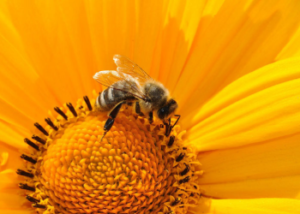It’s World Bee Day, so we’re buzzing about honey! Honey is such a unique food source that has a bunch of natural health benefits. Here’s what you should know about nature’s sweetener.
First, let’s learn about bees. Research has shown that honey bees are the most important pollinators on our planet. They pollinate plants so they can produce fruit (or vegetables). Once the fruit falls off the plant or is deposited by birds or other animals, the plant can reproduce. If bees did not exist, we would not be able to effectively pollinate the plants that feed us.
Taking honey from the hive doesn’t harm the bees. Beekeepers don’t take all of the honey when they harvest it; they take the extra honey that bees don’t really need. The bees have more than enough to live on through the fall, winter and early spring. In fact, having too much honey in a hive cared for by a beekeeper can harm the bees. If there’s too much honey, there’s not enough room for the queen bee to lay eggs. Fewer bees in the winter means a lower survival chance for the hive.
What is honey? The honey-making process isn’t the prettiest. Honey is made from the regurgitation of nectar from flowers. The honey is stored in waxy honeycomb to then be used as a food source for the queen bee, worker bees and young bees.
Honey isn’t just a natural sweetener. The honey you buy in the store is likely pasteurized, which means it has been through a process that helps it stay fresh for longer. The alternative is raw honey, which retains more antioxidant and antibacterial properties than pasteurized.
There are two types of honey: light and dark. The color of the honey depends on the type of plants from which the bees harvested nectar. Light honey has a floral taste, but it’s not a very strong flavor. Dark honey has a richer flavor and contains more antioxidants as well as antibacterial and antifungal properties.
Add more honey in your diet with these sweet and savory Eat Smart, Move More recipes:


